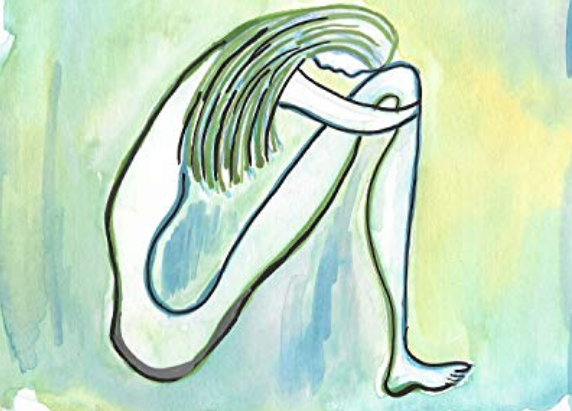Perfection in the Eyes of a Teen: Body Image Issues Told from Different Adolescent Viewpoints

November 4, 2022
The way people see themselves is referred to as body image. Negative body image, also known as distorted body image, refers to an unrealistic perspective of one’s own body. It is particularly common among women. As social media becomes a significant factor in people’s lives, the media has started to present beauty, attractiveness, and perfection in a skewed, unrealistic manner. The media has caused teenage girls to feel unhappy with their bodies by exposing young girls and boys to unrealistic standards of beauty and bodily perfection. This dissatisfaction with one’s body image can lead to disordered eating, self-sabotage, self-hatred, negative social behavior, and overall, an undesirable mental, emotional, and physical state.
The feeling of hating your body is unlike any other. Some girls feel compelled to give up certain foods and count the number of calories in a meal to “love their body”. Teenage girls who don’t have a big chest or a big butt are seen as defective beings in the eyes of a male, and if they don’t spend their first paycheck or their parent’s savings trying to replicate the so-called-perfect-image, they will remain physically and socially inferior to the media’s idea of perfection.
Teenage girls are at an impressionable stage of life when social media and even sports can have a significant influence on girls and how they perceive themselves.
For entertainment, teenagers turn to social media and are heavily influenced by the message of the media, whether it be through movies, magazines, or even some aspects of social media. The issue with this is that the media has a specific way of doing things and has limited ideas of beauty in our society, which can be damaging to a teenage girl who is susceptible to it.
“I believe social media has an impact on young girls because most of the time, when I’m going through any social media feed and I see someone with a flawless figure or face, I automatically think, oh, I really want to look like her,” said Varsity WHS Soccer player and dancer Renee Cormier.
An under-discussed topic is body image in sports and the athletic pressures to be “beautiful.” Athletes of all ages, genders, shapes, and sizes are subjected to this stress, which can be detrimental to their physical and emotional health. Unrealistic and irrelevant patriarchal standards are frequently enforced in women’s sports. These include uniform regulations and media objectification. All of this has an influence on how women in sports view themselves, how they are presented, and the expectations that young female athletes have for their image and bodies.
“I had a Russian teacher who was higher up in the dance world and was very professional but had a very extreme way of teaching. As I got older, there started to be more of a turn towards body image and especially weight and how you look and it was severely tied to how we were as a person. The first thing I experienced in her class was when she took a few girls and put them in the middle of the dance floor. I was one of them, and she said, ‘These are the girls you want to look like.’ At the time, I was severely underweight, so I had this idea that if I got any bigger, I would be out of the line of skinny girls and I wouldn’t be good enough anymore, which was a huge stress for me, and from that point on body image has always been on my mind,” said Cassandra Doyle, a pre-professional ballerina and WHS junior.
Ballet is a profession based on the visual and physical aspects of dancers’ bodies due to its fusion of artistry and athleticism. In ballet, how you appear counts just as much—if not more—than what you can do as a dancer. Ballet attracts perfectionists who thrive on rigor, dedication, and discipline as much as creativity, expression, and joy, and ideals and standards are known to be almost absurdly high. Everybody has a different story because it seems like every dancer’s body has some sort of imperfection, and it’s terrible to believe that an art form built on expressive artistry could continue to tolerate such blatant harm in the name of beauty. For dancers, it is important to recognize that body image goes far beyond the physical; this is fundamentally a mental health concern and, for dancers, a healthy mind is just as essential.
“As a dancer, I feel like body image has affected the way I’ve viewed myself as a dancer. This is because, say, you’re a girl in a ballet class and you’re wearing nothing but a tight leotard and tights, and looking at yourself almost 3-4 days a week can seriously cause severe body issues,” said Cormier.
Bullying has become a life-threatening epidemic and what hurts the most is that adolescents are the victims of this horrific act just because they are either too overweight or too underweight. Bullying is a silent disease and can come in all forms including direct bullying and cyberbullying.
“Growing up in Sudbury, everyone had to portray a certain image, and I was a little bit on the heavier side. I was constantly made fun of and ridiculed, and this was when I was probably in third grade. I just never had any friends and as I grew older, I developed an eating disorder, starved myself, and also became bulimic. I noticed that when I was skinnier it allowed me to have more friends, so I continued to always watch what I ate and over-exercised,” said one female who would like to remain anonymous.
As technology, particularly social media, has grown, it has been utilized in unprecedented ways. Childhood friends have been reconnected, essential news has been shared, and brilliant ideas have been spread as a result of it. However, technology, like many other things, can cause significant harm on both a personal and societal level when abused. Despite some significant advances, social media is harming society by serving as an outlet for cyberbullying in the form of body shaming, which is becoming increasingly common and, as a result, encouraging body image issues, particularly among young women. Body shaming, in itself, is not illegal but bullies fail to realize that their actions may not result in legal punishment, but their words will have a lasting impact on the victim they are targeting.
Acceptance is one of the most effective methods to increase our body confidence. Acceptance and confidence will follow if you can face the mirror daily and create a good body image. The difficulty comes from confronting the critical inner voice that wants to blame us and distort our physical awareness. Attempt to develop a defiant attitude against that voice. It may help you in overcoming body image issues.
Take your right to happiness and confidence seriously because our bodies are uniquely precious and we must interrogate and dismantle the concept that there is a “right” and a “wrong” body type. Acceptance is golden, and health and wholeness should be at the center of how we perceive and interact with our bodies.

